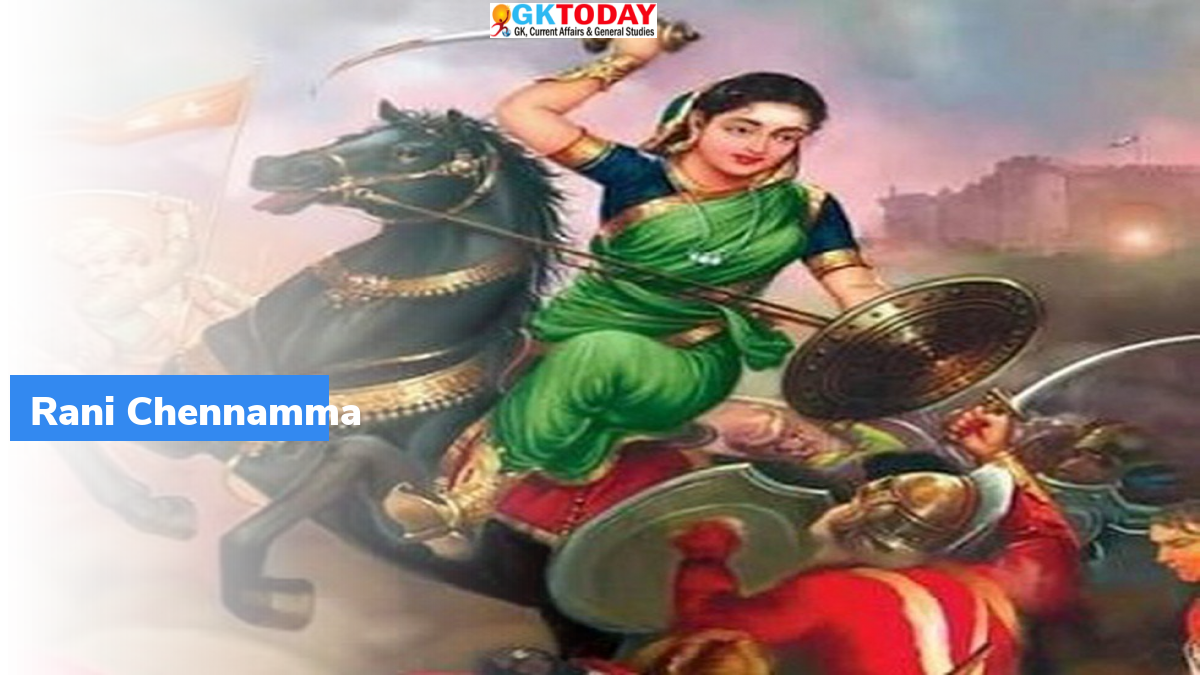Kittur Chennamma
Kittur Chennamma was an in Indian queen of Kittur. Kittur was a princely state in Karnataka. She fought against the British East India company against the Doctrine of Lapse in 1824. She also defeated the Britishers. However, she died in the imprisonment of second rebellion by the company. She was one of the first female rulers to fight against the Britishers. She became the symbol of independence movement in India.
Early life
Chennamma was born in Kakati in 1778. The village is now located in Belgavi district of Karnataka. She was from the Lingayat community. She learnt sword fighting and horse riding from young age. She was married to Raja Mallasarja at the age of 15.
Against the Britishers
Rani Chennamma’s husband and son died in 1824. Thus, the responsibility of maintaining independence of Kittur from the Britishers fell on Rani Chennamma. She adopted Shivalingappa in 1824 and made him the heir to the throne.
Doctrine of Lapse
The Britishers did not agree her adoption. Also, they wanted to annex Kittur under Doctrine of Lapse. The Doctrine of Lapse is mostly associated with Lord Dalhousie (as he used it more vigorously). He was the Governor General of East India company in India between 1848 and 1856. But the Doctrine of Lapse was introduced by the Court of Directors of the East India Company. According to Doctrine of Lapse, the ‘princely’ status of a princely state will be abolished if the ruler died without an heir. Also, it removed the right of the states to choose a successor.
War
Rani Chennamma sent a requisition letter to the Lieutenant Governor of Bombay Presidency. But her request was turned down and the war broke out. In the first round of war fought in 1824, the Britishers lost heavily. However, during the second war, Chennamma was captured and imprisoned at Bailhongal fort. She died here in 1829.
Kittur Utsav
The victory of Rani Chennamma is celebrated during the Kittur Utsav till date. The utsav is celebrated during the month of October.
In the memory of Rani Chennamma
- In 2007, the then President of India Pratibha Patil unveiled a statue of Rani Chennamma in the Parliament.
- In 1977, postage stamp was released by the Government of India.
- In 2011, a coast guard ship named after “Kittur Chennamma” was commissioned
- The Indian Railways runs a train by her name called “Rani Chennamma Express”. It connects Bangalore and Miraj.
- The Rani Chennamma University in Belgavi has been named after her


